
newspapers : 1963
| home | catalogue | history | references | appendix |
 |
surfresearch.com.au
newspapers : 1963 |
|
|
|
|
|
Seeing
the world on surfboards
By
KERRY YATES
|
THE partners are Paul
Witzig, Peter Clifton, and Paul Quiney, all
21 and all expert surfboard riders. "Bruce has a large studio in
Hollywood," said Peter, "and travels the
world shooting scenes for his surfing
movies. Paul Witzig met Bruce Brown
in Hawaii two years ago. Paul, who owned his first
surfboard when he was eight, said he
couldn't pass through Hawaii without trying
its famous surf, so he stopped off for two
weeks.
|
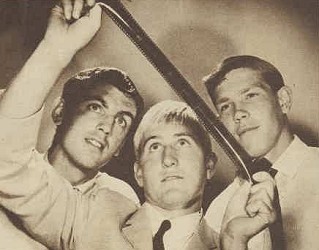 EXAMINING a sequence in
the film
"Surfing Hollow Days" are, from left. Peter Clifton, Paul Witzig, and Paul Quiney. |
PHIL EDWARDS, of
California,
riding a huge wave at Sunset Beach, Hawaii. Phil, who is recognised as the best surfboard-rider in the world, stars in the film which is now being shown in Australia. Printed previously in Australian Women's Weekly Wednesday 7 March 1962, page 5. |
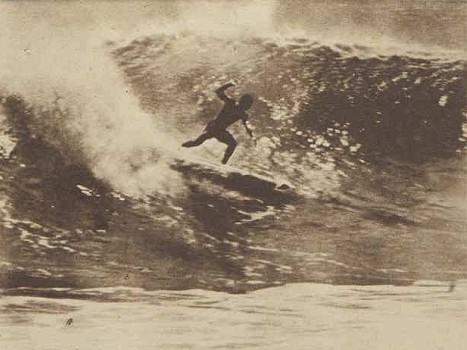 |
The "Midget" does Hawaiian ... and
wins world title.
By Kerry Yates
MIDGE FARRELLEY, with the trophy he won in Hawaii. (Photograph Ron Church) Trove
1963 '"The
Midget" goes Hawaiian... and wins world
title', The Australian Women's Weekly
(1933 - 1982), 6 March, p. 3.
(Teenagers' Weekly), viewed 09 Sep 2016,
http://nla.gov.au/nla.news-article47509377 |

|

| Teenagers' Weekly The Australian Women's Weekly, 2 October 1963, page 1. SHE RIDES THE WAVES Pearl Turton, our 16-year-old cover girl, competed at the Interstate Surfboard Riding Championships held recently at Avalon Beach, near Sydney, and was judged the best girl surfboard rider. Living and working as a trainee cosmetician at nearby Palm Beach, she spends most of her spare time in the water - winter and summer. Petite and feminine, she laughed at the idea that riding the waves should be strictly for the boys. "I'm just stoked (crazy) about board-riding," she said. "lt's a great sport for girls, too." So why don't YOU take up surfboard riding this summer? On page three we tell you all about it. Trove 1963 'Teenagers' WEEKLY', The Australian Women's Weekly (1933 - 1982), 2 October, p. 1. (Teenagers Weekly), viewed 20 Jan 2017, http://nla.gov.au/nla.news-article46449817 |
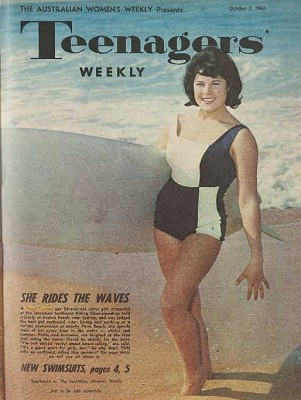 |
|
DARRYL HOLMES, a 19-year-old surfboard builder, shows reporter Kerry Yates how a foam board
is covered with fibreglass.
|
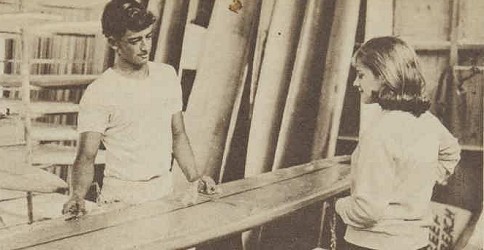 |
|
World's Oldest Surfie
Duke Paoa Kahanamoku (pictured) the first person to ride a surf board in Australia, arrived in Sydney yesterday to launch a new Australian book on surfboard riding. The
Duke, 73, launched the sport at
Freshwater Beach almost 50 years
ago.
He
is not only the oldest "surfie"
in the world, but he also owns the
biggest surf board
in Hawaii.
"It's
16ft. long and it weighs 1141bs.," he
said. "I've owned it since 1939, but
it's
been a while since I've been able to
ride it."
He
said he read the new book, The Australian Surfrider,
on his flight to Sydney from Hawaii and was
puzzled by some of the expressions in it.
"Wipe-out? - I've never heard of it," he said. "Hanging five is another funny saying. These strange expressions really have me puzzled." |
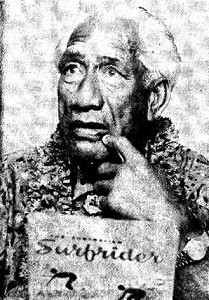 |
|
The
Canberra Times
6 December 1963, page 28. DUKE LIKES SURFERS' Veteran
surf-board
rider Mr. "Duke" Paoa Kahanamoku,
73, of Hawaii, thinks Surfers
Paradise is "wonderful,
wonderful".
Mr. Kahanamoku is credited with
introducing surfboard
riding to Australia almost 50 years
ago.
He
and his wife Nadine have been touring the
Gold Coast and were watching the Tungan surf
carnival when this picture was taken.
'if you think Waikiki's good, you ought to see those beaches in Australia,'" Mr. Kahanarnoku said. |
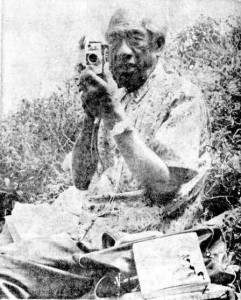 |
|
|
|
|
|

| home | catalogue | history | references | appendix |